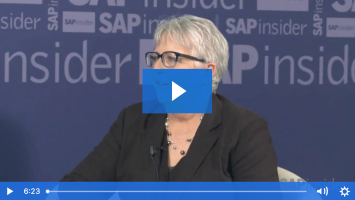Reaching the Peak: Simplifying Payroll Overhauls Without Starting from Scratch
Meet the Experts
Meet the Authors
Key Takeaways
⇨ Learn how companies are navigating the complex journey of upgrading their payroll systems without the daunting task of starting from scratch.
⇨ Kapil Jhanji from Zalaris shares expert advice on how meticulous planning, pre-built templates, and strategic partnerships can simplify the transition to modern payroll systems.
⇨ Understand the importance of early involvement from experienced providers to ensure a smooth implementation process, tailor-made to fit an organisation's unique needs and regulatory requirements.
For Companies seeking to modernise their payroll systems, the prospect of rebuilding from scratch can be daunting. This challenge often consumes valuable time and resources, either slowing the process down significantly or deterring organisations from making necessary upgrades altogether.
Kapil Jhanji, Solution Architect at Zalaris, sheds light on the challenges faced by some Companies: “Streamlining the current system and then transitioning to a new payroll system is akin to reaching the peak of one mountain, only to realise there’s another towering summit ahead. This process involves meticulous evaluation and planning, precise data preparation, selecting and customising a new system, migrating data, testing, training, effective change management, and ongoing support.”
“For the existing customers currently using SAP ERP HCM for payroll, there are several options available such as migrating to S/4HANA or adopting SuccessFactors ECP. Both options utilise the existing SAP payroll engine. Customers can explore the options to lift and shift existing configuration, start from scratch or partnering with a payroll provider that utilises accelerators. In the ‘starting from scratch’ approach, each step demands careful planning, substantial investment, and resource allocation. Customers must carefully evaluate these options to determine the most cost-effective long-term solution, especially those with highly bespoke payroll solutions.”
Explore related questions
Rebuilding a payroll system from scratch represents a significant undertaking for everyone. It involves intricate customisation, rigorous testing, and extensive investments of time and money. The complexities of payroll regulations and the need for meticulous accuracy further compound the challenges.
By providing a template enriched with pre-built, legislatively compliant and leading practice configuration, Zalaris minimises the need for users to reinvent the wheel. These configurations cover various aspects of payroll processing, including tax calculations, deductions, superannuation, and reporting requirements. This approach not only accelerates the implementation timeline but also reduces costs associated with customisation.
Kapil explains that: “PeopleHub by Zalaris is powered by the SAP SuccessFactors Employee Central Payroll (ECP) solution, drawing upon its extensive experience from numerous implementations. A specialised template has been built based on this experience to facilitate implementation. This template integrates preconfigured settings for managing Payments, Allowances, Deductions, and other country-specific features. Serving as an accelerator, it offers customers advantages such as base configuration, simplified business processes, and streamlined data migration processes.”
“PeopleHub is designed to accommodate customers using both SAP and non-SAP legacy systems, and it is capable of seamlessly integrate with third-party financial systems and leave/attendance systems. It is scalable to suit businesses of any size and complexity. Our design ensures it can be effectively utilized across various industries and for multiple entities. Additionally, our implementation methods facilitate the smooth migration of legacy rules from the customer’s previous system into the new platform.”
In addition to this, Zalaris offers the Spinifex IT Easy Reporter tool, granting customers access to a comprehensive suite of payroll reporting capabilities. Zalaris’ ECP solution integrates with existing HR systems and can adapt to evolving business needs. Organisations can customise the solution to accommodate various workforce structures and compensation frameworks – including payroll processing requirements. By automating complex payroll processes and calculations, Zalaris enhances operational efficiency and reduces manual errors. This allows organisations to streamline payroll processing, improve accuracy, and optimise resource allocation.
Kapil additionally explained that timing is crucial: “When considering a payroll implementation, it’s crucial to involve a payroll provider early in the planning phase. This ensures that the provider can contribute valuable insights and expertise right from the outset of the process. It allows them to understand the organisation’s specific needs, regulatory requirements, and any existing systems or processes in place. Moreover, early involvement enables the payroll provider to collaborate closely with the organisation’s internal teams, such as HR and finance, to streamline the implementation process and address any challenges proactively.”
“Zalaris, as a leading SAP Gold Partner with over two decades of experience in implementing and supporting SAP HR & Payroll solutions, plays a crucial role in the planning phase. Engaging in the initial steps of the transformation, Zalaris collaborates closely with the business to devise a strategy for payroll transformation. This involves in-depth discussions leading to the proposal of architecture, peripheral system considerations, and overall integrations within the customer’s ecosystem.”
The journey to SAP payroll transformation doesn’t have to start from square one anymore. A pre-built template accelerates the transition process and optimises both effort and cost.
However, this transformation goes beyond a mere upgrade; it entails embracing change and maintaining a competitive edge in the technological landscape.







